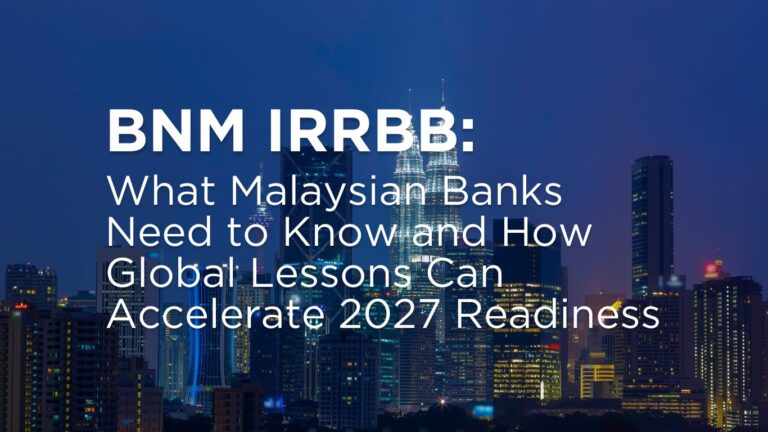Surprisingly, a revision of the Risk Weighting of Sovereign Debt was excluded from the ‘Finalization Package’, even after the lessons learned from the EU Sovereign Debt Crisis. Some supervisors go beyond the Basel framework to address this perceived weakness.
The Basel 4 framework includes revisions of the Standardized Credit Risk Approach in a general attempt to make the framework more risk sensitive. Risk weighting of assets is therefore fundamentally different under the new rules for a portion of the asset classes, like mortgage loans, Bank exposures, etc.
Changes to those risk weight methods generally found their justifications in observations made during the Global Financial Crisis. Surprisingly, whereas the GFC triggered a European Sovereign Debt Crisis, no changes to the risk weighting logic was included in the finalization package.
Increased Risk Sensitivity
The Standardized Approach for Credit Risk was made more risk sensitive based on the revisions included in the finalized package. There is a broad consensus that the BCBS’ finalization package has successfully met the objective of increasing overall risk sensitivity with the introduction of new SA rules.
Examples are that risk weights are more closely linked to underlying risk factors in some asset classes (e.g. real estate exposure classes), Exposure at Default calculations made more conservative for some banking products (e.g. a 10% CCF applicable to unconditionally cancellable credit lines as opposed to 0%). One exposure class that has remained untouched throughout the SA revision RW calibration process is that of the sovereign exposures.
This raises the question if this status quo in sovereign risk weights is caused by a sufficient degree of risk sensitivities in the old framework, or if other elements might play. Let’s have a closer look.
Risk Free Sovereign Debt?
Basel 2 introduced an option for Supervisors to assign a 0% risk weight to sovereign exposures denoted in the domestic currency. Somewhat surprisingly, this option has been withheld in the finalized rules even though it could have been expected to be replaced by a more risk sensitive risk weight, recognizing the very existence of default risk in such assets in the first place.
In fact, the final rules not only surprise by maintaining the 0% risk weight (also in the IRB Approach, where the 0.03% PD floor does not apply to Sovereign exposure!), they also exclude Sovereign exposure from the Large Exposure framework and maintain the possibility for 0% haircuts for both Credit Risk Mitigation as for Liquidity calculations.
In short, all of this can be understood as: Sovereign debt carries no credit risk, no volatility and no liquidity risk. Now let’s be clear; sovereign debt carries all of those risks and we don’t even have to go back far in history to see all the clear evidence.
The Global Financial Crisis, even though not a public debt crisis in origin, triggered a full-fledged Sovereign Debt crisis in the EU (and beyond) ultimately requiring IMF helplines for Greece and other countries as an unpopular, albeit necessary measure. Public debt and sovereign default risk was very much at the center of debate among financial risk experts and scholars in early 2009.
What Does History Tell Us?
History has repeatedly shown that governments do default on their repayment obligations, sometimes caused by financial constraints, often after a financial crisis, sometimes out of political decision.
In 2013, Cyprus was handed a bailout loan after having agreed to swap 2013 maturity bonds with new 2016 bonds, with an S&P ‘selective’ default rating as a consequence.
In 2015, Greece was unable to pay back 1.55 bio EUR to the IMF. Both are default events where IMF and/or ECB acted as a ‘guarantor of last resort’.
Further bailouts in the wake of the European Sovereign Debt crisis were handed to Ireland, Portugal and Spain, where only the ECB’s unlimited support promise was able to prevent speculative runs against the respective sovereign bonds. Since the turn of the century, Ukraine (2000) and Ecuador (2009) have also defaulted on government debt.
More than Default Risk
On top of this, sovereign credit risk goes beyond real sovereign default events. Repayments of sovereign debt includes risks that are linked to controls that only governments have as part of their monetary policy toolbox.
A devaluation of the currency is an obvious and crude way for governments at risk of default to stick to their contractual payment obligations, be it at a lower cost and at the expense of the wider public, including their bond holders.
A more subtle tool to reduce the future payment obligations is to increase inflation rates. There is little to no research evidence on the practical usage of the inflation tool to alleviate future debt burden, but it can be argued that at the very least, this side-effect might be a consideration in policy formulation.
Even though this is by no means a default risk, it could be argued that it is a component of credit risk that is specific to lending to governments that should be included in the overall capital requirements.
Work in Progress
In light of the European Sovereign Debt crisis, changes to the rather lenient Basel treatment of government bonds was expected to be one of the focal points in the Basel 3 revisions. Instead, the BCBS published a Discussion Paper[1] on the topic in the very same month that the finalized Basel 3 rules were published.
Conclusion
The fact that the ‘final rules’ did not include any enhancement in the risk sensitivity of Sovereign debt is concerning. But the overall lack of progress, evidenced by the fact that no consultation or proposal has happened almost 2 years since the publication of the Discussion paper is downright worrying. Surely, the topic is complicated and there are other stakes at play than the pure increasing of the framework’s risk sensitivity.
In absence of current regulation, some supervisors propose own risk weights for Sovereign exposures (e.g. HKMA introduced risk weights for sovereign concentrated exposure exceeding the bank’s Tier1 Capital). Others propose to include sovereign debt in the Large Exposure limit reporting, thereby setting limits to sovereign exposures linked to credit ratings.




